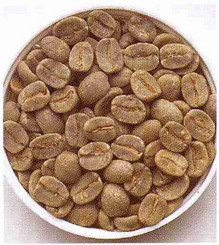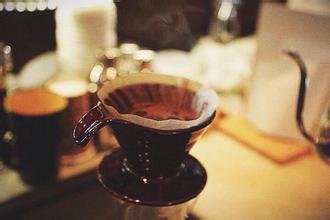Roasting techniques of coffee bean treatment: coffee bean baking theory (2) detailed introduction
Let's talk about the definition of various baking degrees and taste. In the United States, Cinnamon (shallow roasting), City (shallow roasting), Fully City (deep roasting) and Dark roast (heavy deep roasting, including Italian and French roasting) have long been used to define the degree of baking (refer to the previous blog post: introduction to roasting). However, the American preference for coffee flavor has always been strong in the west and light in the east, so the shallow roasting on the west coast may have reached the deep roasting on the east coast, and vice versa, so these terms still belong to their own tune. It's not scientific. In recent years, the American Fine Coffee Association has strongly advocated the caramelization value (Agtron number) to determine the baking degree, using the red inner line to determine the caramelization degree of coffee beans. The higher the value, the lower the caramelization, that is, the shallower the baking degree, and the lower the value, the deeper the caramelization, that is, the deeper the roasting degree. With the data, you can more accurately understand the roasting degree of coffee beans, so that the shallow roasted coffee in the United States and the West will not become a joke of re-roasting coffee in the East. This is a good evolution.
American Fine Coffee Association SCAA Caramelization numerical Table (Agtron number)
The caramelization value (Agtron number) is a set of scientific standards to define the baking degree. The caramelization value above 70 is the shallowest roasting, the City,40 above Cinnamon,60 is shallow roasting, or the so-called Fully city, and below 35 is heavy and deep roasting, including French roasting and espresso roasting.
Coffee flavor also varies with roasting degree. Generally speaking, sour taste is inversely proportional to roasting degree. If you prefer sour taste, you might as well buy coffee with light roasting degree. If you like thick and sweet taste, you can choose heavy roasted beans. In addition, caffeine content is inversely proportional to roasting degree, that is to say, light roasted coffee contains more caffeine than re-roasted coffee. Because caffeine can be destroyed during baking. The fruit aroma will also decrease with the deepening of baking degree, but the fermentation flavor, choking taste and sweet taste of mellow wine, shallow roasted coffee is not easy to develop, re-roasted beans have more advantages in this aspect. However, if the rebaking technique is not good, it is likely to produce a stove of rotten coffee that is scorched and bitter.
Shallow baking and deep baking, noisy! Whether coffee should be roasted lightly or deeply is the most controversial topic in the industry, even to the point of falling out. Generally speaking, the degree of roasting in Northern Italy and the eastern United States is relatively shallow, and the caramelization value is mostly around 40. The well-known producers of this school include Illy Caffe, Green Mountain and Vivace Espresso (note: although the company is based in re-roasted Seattle, it goes against the trend and advocates shallow roasting). The coffee beans of these companies immediately cease fire before the second explosion or before the coffee oil is about to ooze from the bean surface. Their argument is that coffee oil contains a lot of aromatic ingredients and should be preserved in beans as far as possible. Coffee oil seeps out. Although the oil looks good, the aromatic components are also lost. This pie also believes that the coffee beans are baked immediately before the oil comes out, the caramelization degree is the best, the Body (consistency) is also the best, and the acidity and taste of the coffee are the most balanced. The shallow Bakery Group also attacked the re-baking industry for baking coffee oil out of the bean table as a disaster.
However, the re-baked pie in southern Italy and the west coast of the United States, such as Peet's Coffee in San Francisco and Caffe' coffee in Seattle, is 39 Arte), and Coffee beans and Machinery Company (Beans and Machines), however, insist that coffee beans must be roasted out of oil in order to taste good. Their beans have been tested that the caramelization values of beans for espresso are all below 35, and the sour sweet potato is even overbaked at 18 degrees, which is really to the point of "heavy baking, hands are not soft".
Most of this pie glided for a while after the second explosion or the appearance of the bean oil. They did not agree with the shallow baking pie's so-called "loss of aroma components" and criticized the shallow baked pie's beans as "underdeveloped." the sharp sour taste seems to outweigh the sweetness and lacks the choking taste, and the flavor is too monotonous. They even ridicule that the real purpose of shallow baking pie is to save money, because only top Arabica beans can withstand heavy baking and develop an excellent flavor that is rich, choking, sweet and does not bite the throat. will only show a monotonous bitter taste.
The heavy baking pie also calls itself the "glutton coffee that walks the edge of the razor." because the coffee beans change so quickly after the second explosion, the whole furnace will be reimbursed for the slightest mistake, unlike the shallow baking pie, which "withdrew its troops" before the oil burst, and the technical level is relatively low. Bitz coffee, which advocates heavy roasting, enjoys a high status in the coffee industry in the United States. Bitz can produce beans at a high temperature of more than 200 degrees Celsius and operate the oven for more than 15 minutes, and it is thick but not bitter. This work is admirable. Of course, this has something to do with Bitz's ability to refit the roaster. In short, the heavy baking pie insists that only the beans after the second explosion, the flavor is complete.
To be fair, light roasting and deep roasting have their own advantages, and drinking coffee is already highly subjective and should respect each other.
Source:
The blog of the coffee wizard
Important Notice :
前街咖啡 FrontStreet Coffee has moved to new addredd:
FrontStreet Coffee Address: 315,Donghua East Road,GuangZhou
Tel:020 38364473
- Prev

Coffee beans knowledge points: Specialty Coffee concept (III)
Specialty Coffee is evaluated and graded by national specialty coffee associations (such as SCAA and SCAJ). There is no clear and uniform definition. It changes and evolves every year. The current standards are roughly as follows: 1. Does it have rich dry aroma (Fragrance): refers to the aroma of roasted coffee, or roasted beans
- Next

Beginner Coffee: how to turn a coffee bean into a cup of coffee? Understand the main points of coffee knowledge
How do coffee beans become a cup of coffee 1, first of all, you need coffee beans (like bullshit) 2, and second, you need a bean grinder why? Because you need to grind the beans into powder! Do you really bite with your teeth? 3. According to the coffee utensils you use, choose the grinding thickness of coffee powder [knowledge of coffee pot grinding] the editor first recommends boutique coffee to new partners.
Related
- Guji coffee producing area of Guji, Ethiopia: Humbela, Shakiso, Wulaga
- What is the most expensive variety of Qiloso in BOP multi-variety group?
- How to store the coffee beans bought home?
- Why are Yemeni coffee beans so rare now?
- Ethiopian Sidamo all Red Fruit Sun Sun Santa Vini Coffee beans
- SOE is mostly sour? What does it mean? Is it a single bean? what's the difference between it and Italian blending?
- Is Italian coffee beans suitable for making hand-brewed coffee?
- How to choose coffee beans when making cold coffee? What kind of coffee beans are suitable for making cold coffee?
- Just entered the pit to make coffee, what kind of coffee beans should be chosen?
- Can only Japan buy real Blue Mountain Coffee? What are authentic Jamaican Blue Mountain coffee beans?

